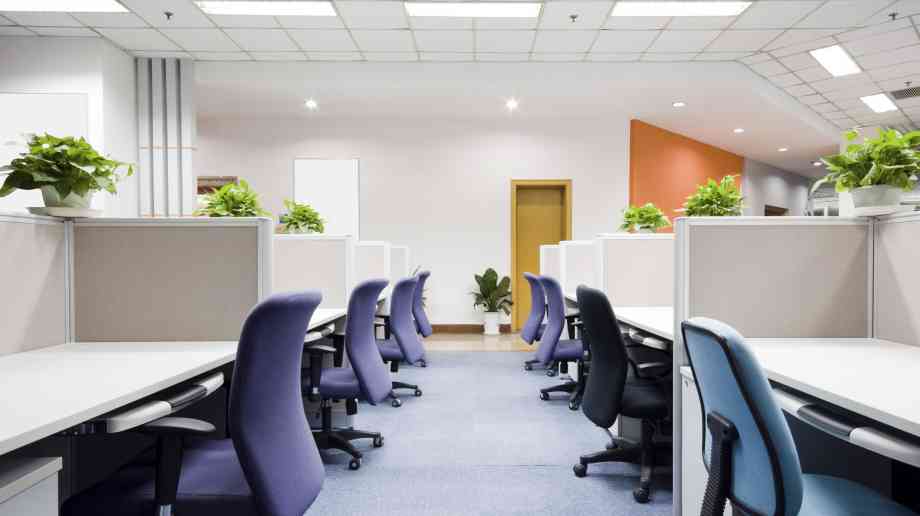Sue Robb of 4Children talks to Julie Laughton and Alison Britton from the Department for Education about the role of childminders in delivering the 30 hours free entitlement.

The importance of building furniture to last
In its push to sustainability can the public sector learn more lessons from the private sector? On behalf of the British Contract Furnishing Association, Jim Pendrill reports
Given today’s unceasing focus on sustainability, the ‘built to last’ mantra makes both sound environmental and commercial sense. Take the example of Morgan Furniture, a designer and manufacturer of contemporary chairs, sofas and tables, and a company which makes a virtue of building products to last.
Rodney McMahon, managing director, said: “For us it is really quite simple. The starting point is always to come up with a high-quality, well-designed, differentiated product which will stand the test of time.”
However he admits that how long products actually last is ultimately down to the quality of housekeeping. “I could take you to a venue where we delivered a product 20 years ago but I would be able to persuade you that that piece of furniture had only been there for a year or two because it had been so well maintained.”
But given the rapidly changing tastes and trends swirling around us, do clients – both public and private sector - actually want products that will last for 20 plus years? Is there any point designing, say, a hotel carpet for 10 years if the client is then going to change the look and style of a hotel within three to five years?
McMahon says this strikes to the heart of a wider question around sustainability. “In my view a more general issue is that the UK has this culture where everyone always wants something new. If you travel around European hotels or restaurants you don’t notice that same urge to constantly change furniture. If anything the trend here in the UK seems to be accelerating.”
To what extent do these questions apply to the public sector?
Alan Whittle is sales director at Wilton Carpets which supplies around 20 per cent of its products to local authorities, Whitehall departments, the Parliamentary Estate, the Supreme Court and other High Court premises. He says to an extent the public sector does think longer term than private sector clients.
Whittle comments: “If we supply a carpet to a pub chain the expectation will be that the carpet only needs to look good for five years, after which it will be changed because interior fashions change. It’s a similar story with hotels, although the refurb cycle will be more like seven to ten years.
“However when we supply to the Parliamentary Estate, the designs will be well established and Pugin-inspired in keeping with the building's original architecture and interior. The emphasis will be on a spec which will deliver maximum longevity.”
Whittle adds that while the demands of the public sector in terms of product performance are no different to the private sector, demands in terms of the procurement process are different with the tender/documentary demands heavier.
He said: “The public sector is more diligent in demanding documentary evidence for things like sustainability whereas clients in other sectors are already aware, for instance in our industry, of the green credentials of wool products and so don’t need a document to tell them about it with every order.”
McMahon agrees that the public sector is inevitably very tender-based, but says that ‘everyone’ in the public sector is now signed up to the sustainability agenda and has to adhere to various sustainability criteria while demonstrating best value.
“Like any commercial organisation the public sector will build things to last and there is still that overriding motivation. The difference is that there is a more bureaucratic approach to it. While the private sector may focus more on the overall ‘greenness’ of a building, the public sector is more concerned about ticking the boxes of sustainability and has a more specific commitment to sustainability rather than this broader approach. Yes there is still box ticking in the private sector too, but someone at the top of a private company or organisation may ultimately make a decision that may not always meet the original criteria. There is more flexibility.”
Budget constraints are another consideration, adds McMahon: “It can be very noticeable in some instances in the public sector. Provided something fits ‘in budget’ then all seems to be well.”
Technology
But does the level of sustainability in a product also depend on what type of product it is? Karl Anderson, head of Design at Gresham Office Furniture, says in terms of the private sector much depends on what specific piece of furniture you are talking about.
Anderson says: “There is a definite split. Everyday items like storage are becoming commodity items where people will buy for the longer term and want longevity in the products. But with key pieces of front-of-house furniture then fads are key and design will change.”
Anderson says design changes driven by technology complicate the picture further. “Technology will continue to be a significant driver of changing design and one can only see that accelerating. Trends such as hot-desking and mobile communication are fundamentally redrawing the design map. Design is being driven as much by how people are actually connecting with the rest of an organisation.”
Wilton Carpets is a good case in point. The company says as technology develops and people’s lives change what it will actually put on floors will change with it, but it says this needn’t be to the detriment of sustainability.
For instance the company is seeing the increased use of recycled fibres in carpets and is literally shredding a carpet back to its basics and remaking it. It says that in the future you could actually end up with a carpet that has been recycled three or four times.
Refurbishment
Indeed the process of refurbishment is becoming increasingly key as companies seek to design products that are timeless, but which also have the flexibility to be refurbished, particularly given that traditional upholstery can also take a long time to replace.
Anderson says his firm is constantly looking at ways to fine tune the use of materials and its processes. For instance, it recently invested in a machine to help cut fabrics for upholstery, making the process much more efficient and cutting down on waste.
As he explains: “If you take the upholstery of chairs, rather than stapling covers into seats we now employ a drawstring method. Rather than using lots of staples you might now have only one which locks the draw string into place and gives you consistent quality throughout.”
McMahon concedes that tastes have changed dramatically over the past generation. “I would say there has been a distinct shift towards people wanting a more eclectic and brighter look. Thirty years ago people would have produced very straightforward and traditional furniture.”
But he remains sceptical over how much the wider market will really change over the next 30 years: “If you take the home environment in particular, people still want chairs that are nice and comfy and nicely upholstered. I do actually wonder quite how significant the impact of technology will be on future trends in this market. The more technology you have in your life the more you retreat at home wanting something a bit softer.”
McMahon says over the last 25 years a lot has changed superficially and a lot has actually not changed: “People still want nice comfortable furniture but what they also have is a lot more choice now. As consumers talk more about sustainability they will become more focused on where things come from and what they cost.”
And if you want proof that building products to last can still pay dividends many years later just talk to Andersen. As he adds: “We are a family business which is built on the very principle of building to last. We still get customers coming back to us with a product they bought 20 years ago on a lifetime guarantee asking us for our help. That says an awful lot.”
Company Focus
BLE Lighting & Power Ltd, a leader in cutting-edge lighting and power solutions, is proud to introduce BLE Connect, a groundbreaking Fully Automated Emergency Lighting System designed to simplify the labour intensive maintenance of emergency lighting across multiple facilities.
Event Diary
UKREiiF has quickly become a must-attend in the industry calendar for Government departments and local authorities.
The multi-award-winning UK Construction Week (UKCW), is the UK’s biggest trade event for the built environment that connects the whole supply chain to be the catalyst for growth and positive change in the industry.
Supplier Profiles
Geo Energy
At GeoEnergy Design, we're on a mission to disrupt the traditional way heating and cooling ha
Latest Features
Professor Harith Alani, director of the Knowledge Management Institute at the Open University explains how AI can be used for good and bad.
Alex Lawrence, head of health & social care, techUK sets out techUK’s Five Point Plan for CareTech.












